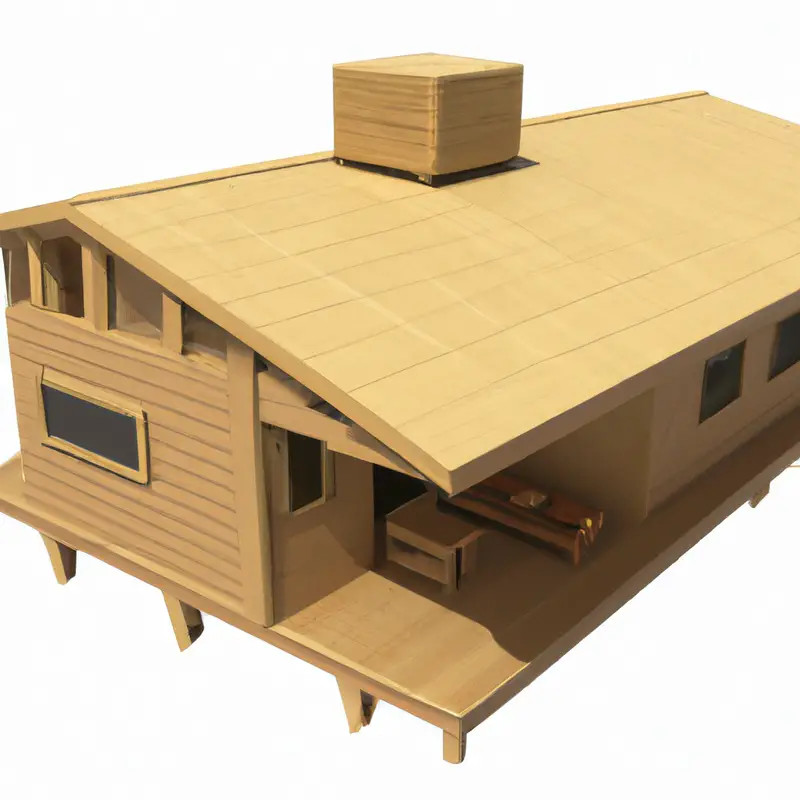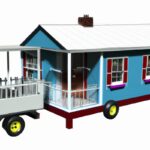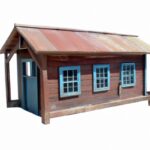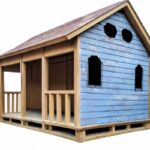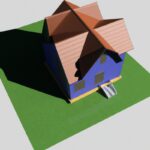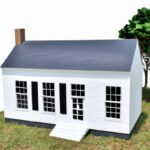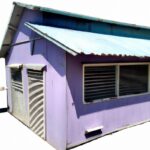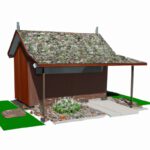Key Takeaways:
- Limited space is a major challenge when living in a Tiny House, requiring creative storage solutions and minimalist lifestyles.
- Managing utilities, such as water and electricity, can be complex due to small systems and limited access to traditional infrastructure.
- Maintaining privacy and personal space can be difficult in a Tiny House, especially when living with others or in crowded communities.
- Adapting to a simpler, more organized lifestyle is essential when living in a Tiny House, as clutter and excess belongings are not compatible with limited space.
Are you ready to downsize your living space and embrace a simpler, more minimalist lifestyle? Tiny houses have become a popular housing option, offering a range of benefits such as lower costs, reduced environmental impact, and a clutter-free existence.
But before you dive headfirst into the tiny house movement, it’s essential to acknowledge the challenges that come with living in such a compact space.
In this article, I will explore the various hurdles you may encounter when residing in a tiny house, from space limitations and privacy concerns to zoning issues and maintenance upkeep. So, let’s navigate through the realities of tiny house living and discover how to overcome these challenges.
| Challenges of Living in a Tiny House |
|---|
| 1. Limited Space |
| 2. Lack of Privacy |
| 3. Storage Constraints |
| 4. Difficulty in Entertaining Guests |
| 5. Limited Outdoor Space |
| 6. Zoning and Legal Restrictions |
| 7. Heating and Cooling Challenges |
| 8. Limited Resale Value |
| 9. Limited Room for Possessions |
| 10. Challenges of Downsizing |
Benefits of Living in a Tiny House
Lower cost of living
Living in a tiny house can significantly lower your cost of living.
With a smaller footprint, utility bills such as electricity, water, and heating are reduced.
Maintenance costs are also minimized due to the smaller size.
Additionally, you can save money by opting for alternative and more sustainable resources, such as solar panels.
Furthermore, the initial cost of purchasing or building a tiny house is generally much lower than that of a traditional home, making it an affordable housing option for many.
Overall, living in a tiny house can help you decrease your expenses and achieve a more cost-effective lifestyle.
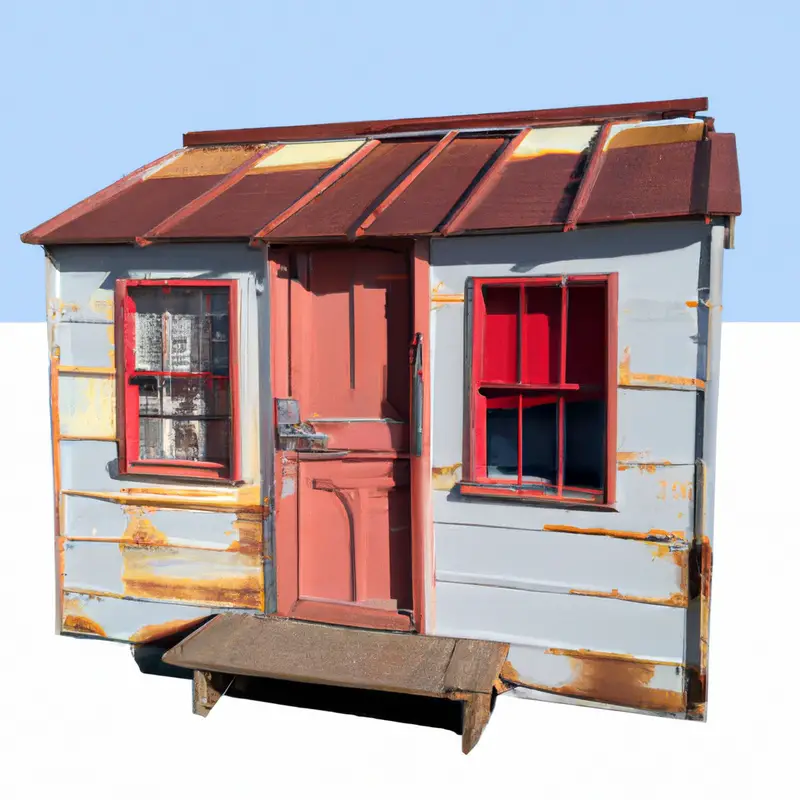
Minimal environmental footprint
Living in a tiny house offers the benefit of a minimal environmental footprint. As someone who is conscious about our impact on the environment, this is one of the reasons I love tiny house living.
With limited space, you naturally consume less energy, produce less waste, and use fewer resources.
Smaller living spaces require less heating and cooling, resulting in reduced energy consumption. Additionally, the smaller footprint encourages a simpler lifestyle, which often means consuming less and generating less waste.
Overall, living in a tiny house allows you to minimize your environmental impact and live a more sustainable life.
Simplified lifestyle and reduced clutter
Living in a tiny house offers a simplified lifestyle and reduced clutter. With limited space, you’re forced to prioritize what truly matters.
This means you have to let go of unnecessary belongings and choose to surround yourself only with items that bring you joy and serve a purpose.
Having less stuff also means less time spent on cleaning and organizing. It’s a liberating feeling to declutter and simplify your life, allowing you to focus on experiences and relationships rather than material possessions.
Space Limitations and Functional Design
Dealing with limited storage options
Dealing with limited storage options in a tiny house can be a challenge, but there are ways to make the most of your space. Here are some strategies to consider:
- Utilize vertical space by installing shelves and hooks on walls to maximize storage potential.
- Choose furniture with built-in storage, such as beds with drawers underneath or ottomans that open up to reveal hidden compartments.
- Get creative with storage solutions, like using hanging organizers in closets, utilizing under-bed storage bins, and utilizing the space above cabinets.
- Stay organized and declutter regularly to ensure you’re only keeping what you truly need.
- Make use of multifunctional furniture that can serve multiple purposes, such as a dining table that can also be used as a workspace.
Remember, with some creativity and efficient use of space, you can overcome the challenges of limited storage in a tiny house.
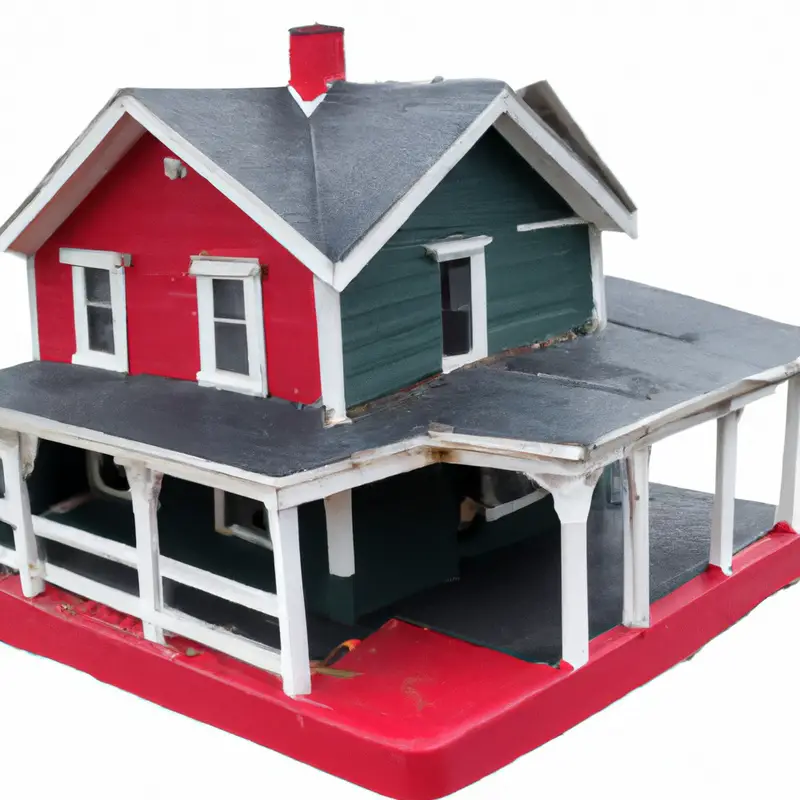
Finding creative solutions for multi-purpose spaces
Living in a tiny house means finding creative solutions for multi-purpose spaces.
One way to make the most of limited square footage is to use furniture that can serve multiple functions.
For example, a sofa that can convert into a bed or a coffee table with hidden storage compartments.
Another idea is to maximize vertical space by using wall-mounted shelves or hanging organizers.
Additionally, utilizing foldable or collapsible furniture allows for easy storage when not in use.
It’s all about thinking outside the box and finding innovative ways to optimize every inch of your tiny house.
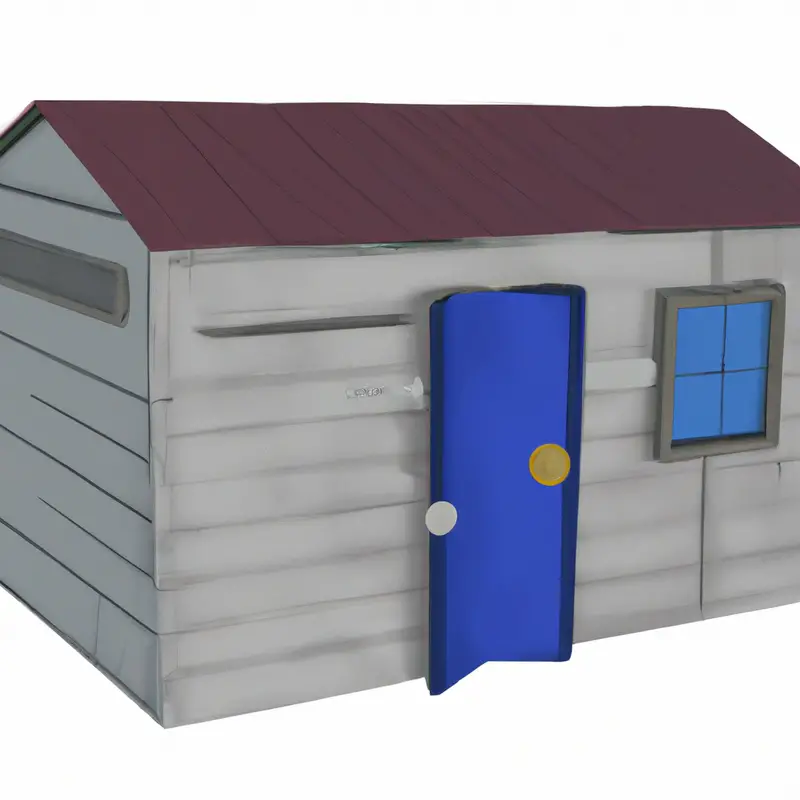
Ensuring efficient use of every square foot
Living in a tiny house requires maximizing space utilization to the fullest.
Here are a few tips to ensure efficient use of every square foot:
- Utilize vertical space: Install shelves, hooks, and storage units on walls to free up floor space. Vertical storage solutions can help keep belongings organized and easily accessible.
- Optimize furniture design: Choose multifunctional furniture pieces that serve multiple purposes. For example, a sofa bed can double as seating during the day and a sleeping area at night.
- Embrace minimalism: Declutter regularly and keep only essential items. Simplifying your belongings will not only save space but also enhance the overall aesthetic of your tiny house.
- Use hidden storage solutions: Look for creative ways to hide storage, such as utilizing under-bed storage, installing built-in cabinets, or incorporating hidden drawers in furniture.
- Maximize natural light: Allow ample natural light to flow into your tiny house to create an illusion of space. Use large windows and light-colored curtains to maximize the effect.
Remember, efficient use of space is key in a tiny house.
With some thoughtful planning and creativity, you can make the most of every square foot and create a functional and comfortable living space.
Privacy and Lack of Personal Space
Balancing privacy needs in a small space
One of the challenges of living in a tiny house is balancing privacy needs in a small space. With limited square footage, it can be challenging to find personal space or create boundaries within the home.
However, there are strategies to address this issue.
Creating separate zones within the house, using curtains or room dividers, and optimizing storage solutions can help maintain privacy. Additionally, open communication and respecting each other’s needs can go a long way in striking a balance between privacy and shared living arrangements.
Addressing issues with shared living arrangements
Living in a tiny house often means sharing a small space with others, which can present challenges. One key issue is addressing shared living arrangements.
In order to navigate this, it’s important to establish clear boundaries and open lines of communication with your housemates.
Creating designated personal spaces within the tiny house can also help maintain privacy and individuality. Additionally, finding shared hobbies or activities that everyone enjoys can foster a sense of community and make living together more enjoyable.
Strategies for creating personal space within a tiny house
Living in a tiny house can present challenges when it comes to creating personal space. However, there are strategies you can use to maximize the available space and ensure some privacy.
- Utilize vertical space: Install shelves, hooks, and organizers on walls to free up floor space and keep belongings organized.
- Create separate zones: Use furniture, curtains, or dividers to visually separate different areas in the tiny house, such as the bedroom, living room, and kitchen.
- Multifunctional furniture: Choose furniture that serves multiple purposes, such as a sofa that can convert into a bed or a table with storage compartments.
- Outdoor retreat: Make use of outdoor space by creating a seating area or a small garden, giving you a place to relax and unwind.
- Declutter regularly: Keep belongings to a minimum to prevent the space from feeling cramped. Regularly declutter and only keep what you truly need and love.
Remember, personal space can be created both physically and mentally. Incorporating these strategies can help you make the most of your tiny house and create a sense of personal space and privacy.
Lack of Amenities and Utilities
Dealing with limited or no access to traditional utilities
Living in a tiny house often means dealing with limited or no access to traditional utilities.
This can present challenges, but there are solutions available.
One option is to find alternative solutions for water and electricity, such as using rainwater catchment systems or solar panels.
It’s important to consider the impact on daily routines and convenience, and to be willing to make adjustments and adapt to a more self-sufficient lifestyle.
Despite the challenges, many people find the benefits of living in a tiny house outweigh the lack of traditional utilities.
Finding alternative solutions for water and electricity
Living in a tiny house often means finding alternative solutions for water and electricity.
One option is to install rainwater collection systems to harvest water for daily use.
Solar panels or wind turbines can be used to generate electricity.
Another option is to connect to existing water and electricity grids if available, or even utilize portable solutions such as water storage tanks and generators.
It’s about finding creative ways to meet these needs while maintaining a sustainable and self-sufficient lifestyle.
Considering the impact on daily routines and convenience
Living in a tiny house can significantly impact your daily routines and convenience. With limited space, you may need to adjust how you go about your daily tasks.
Cooking and meal preparation can be more challenging in a small kitchen, requiring organization and efficient use of available appliances.
Additionally, personal hygiene routines like showering and getting ready may need to be streamlined to accommodate limited bathroom space. However, smaller living spaces can also promote a simpler lifestyle, encouraging you to prioritize and focus on what truly matters to you.
Finding creative solutions and establishing routines that work for your unique situation can help you navigate the impact on your daily life.
Zoning and Legal Challenges
Understanding and navigating zoning regulations for tiny houses
Understanding and navigating zoning regulations for tiny houses can be a complex task.
It’s important to research and understand the specific zoning regulations in your area before building or parking a tiny house.
These regulations may vary from location to location and can dictate where and how you can legally live in a tiny house.
Some areas may have restrictions on the size, placement, or use of tiny houses.
Working with a knowledgeable professional or consulting local authorities can help ensure compliance with zoning regulations and avoid potential legal challenges.
Dealing with restrictions on permanent placement or parking
Dealing with restrictions on permanent placement or parking can be one of the biggest challenges of living in a tiny house.
Many areas have zoning regulations that dictate where tiny houses can be located, and finding a suitable permanent placement can be difficult.
Additionally, parking restrictions may limit where you can park your tiny house on wheels.
It is essential to research local laws and regulations before choosing a location for your tiny house.
Exploring alternative options such as tiny house communities or private land rentals can help overcome these challenges.
Exploring viable options for legal tiny house living
One viable option for legal tiny house living is to find communities or developments specifically designed for tiny houses.
These communities often have their own zoning regulations that allow for tiny houses and provide the necessary infrastructure and amenities.
Another option is to pursue accessory dwelling unit (ADU) regulations, which allow homeowners to build a small, detached structure on their property.
Additionally, some areas have relaxed zoning regulations for temporary or mobile tiny houses, such as RV parks or campgrounds.
Exploring these options can help you find a legal and welcoming home for your tiny house.
Maintenance and Durability
Addressing potential issues with wear and tear
Living in a tiny house comes with its fair share of challenges, and one of them is addressing potential issues with wear and tear.
With limited space and constant use, it’s important to take proactive measures to ensure the durability of your tiny house.
Regular maintenance is key, such as checking for leaks, inspecting the foundation, and addressing any signs of deterioration promptly.
Additionally, using high-quality materials, investing in proper insulation and weatherproofing, and practicing good cleaning habits can help minimize wear and tear and prolong the lifespan of your tiny house.
Ensuring proper insulation and weatherproofing
Proper insulation and weatherproofing are essential for living comfortably in a tiny house.
Insulating the walls, floors, and ceilings helps maintain a consistent temperature and reduce energy costs.
Weatherproofing involves sealing any gaps or cracks to prevent drafts or water damage.
Using high-quality insulation materials and sealants, such as foam or caulk, is recommended.
Additionally, installing weatherstripping on doors and windows can improve insulation.
Regularly checking for any signs of damage or wear and promptly addressing them is crucial for preserving the insulation and weatherproofing of your tiny home.
Regular upkeep and maintenance of a tiny house
Regular upkeep and maintenance of a tiny house is important to ensure its longevity and functionality. Here are some essential tasks to keep in mind:
- Cleaning: Regularly clean the interior and exterior of your tiny house to maintain a fresh and tidy living space. Dust, sweep, and mop the floors, wipe down surfaces, and clean windows and mirrors.
- Inspect and repair: Routinely inspect your tiny house for any signs of damage or wear and tear. Fix minor issues promptly to prevent them from escalating into larger problems.
- Check utilities: Monitor and maintain your water and electrical systems. This includes checking for leaks, testing smoke detectors, and replacing batteries as needed.
- Weatherproofing: Ensure that your tiny house is properly insulated and weatherproofed to keep it comfortable and protected from the elements. Check for drafts, seal any gaps, and insulate the walls and roof.
- Exterior maintenance: Regularly inspect and maintain the exterior of your tiny house. This includes cleaning the gutters, checking the roof for leaks or damage, and maintaining the siding or cladding.
By keeping up with these regular maintenance tasks, you can enjoy your tiny house for years to come. Don’t forget to personalize your space to make it a cozy and inviting home!
Adaptability and Future Needs
Challenges of accommodating life changes or family expansion
One of the challenges of living in a tiny house is accommodating life changes or family expansion.
As your needs evolve, it can be difficult to adjust to the limited space.
Adding new family members or experiencing major life changes might require more room and privacy, which can be a challenge in a tiny house.
You will need to carefully consider the layout and design of your tiny house to ensure it can adapt to your changing needs.
Some creative solutions include convertible furniture, loft spaces, or even adding additional modules to your tiny house.
It’s important to plan ahead and anticipate how your tiny house can accommodate these changes.
Considering long-term sustainability of tiny house living
Living in a tiny house can be challenging when it comes to long-term sustainability.
One of the main concerns is the limited space and the potential difficulty of adapting to future needs, such as accommodating life changes or expanding the family.
It’s important to consider if a tiny house will meet your needs in the long run.
Additionally, the lack of amenities and utilities in some areas can also be a sustainability challenge.
It’s essential to explore alternative solutions for water and electricity to ensure a sustainable living environment.
Lastly, finding ways to create flexibility and adaptability within the tiny house can help address future needs.
Exploring options for future flexibility and adaptability
When thinking about the future and how to make a tiny house more flexible and adaptable, there are a few options to consider.
One option is to design the house with modular or movable components, allowing for easy reconfiguration or expansion.
Another option is to choose a tiny house that has the potential to be added onto or converted into a larger space in the future.
Additionally, incorporating smart home technology can provide flexibility through automation and remote control of various systems within the house.
These options can help ensure that your tiny house can accommodate future needs and changes in lifestyle.
Final Verdict
Living in a tiny house presents unique challenges that require careful consideration. These challenges include dealing with limited storage options, finding creative solutions for multi-purpose spaces, balancing privacy needs, and addressing the lack of amenities and utilities.
Navigating zoning regulations and addressing maintenance and durability are also important factors to consider.
Despite these challenges, the benefits of lower cost of living, minimal environmental footprint, and a simplified lifestyle make tiny house living an intriguing option. With proper planning, creativity, and adaptability, these challenges can be overcome, making tiny house living an enjoyable and fulfilling experience.
